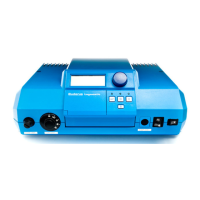Basic functions
6
Logamatic 2107 controls - We reserve the right to make any changes due to technical modifications.22
6.4 Changing the operating mode
The keys on the 2107 controls (see diagram) perform the same functions as the
keys on the remote control. In heating zone with remote control, the operating
mode is set on the remote control. In this case, the keys on the controls are
blocked, although the LEDs will indicate which operating mode is set on the
controls.
For two heating zones, the operating mode keys and LEDs apply
– to both heating zones simultaneously if no remote control is installed,
– to the heating zone without the remote control if a remote control is installed
on the other heating zone,
– disabled if remote controls are installed on both heating zones (in this case,
the LEDs show the operating mode of the most recently modified heating
zone or for the DHW).
You can operate the controls in two ways:
– Automatic mode
– Manual mode
Automatic mode
Your heating system follows a selected heating program, i.e. it provides heat
and DHW at preset times.
Typically, homes are heated less at night than during the day. With the
Logamatic 2107 controls, you do not have to close the thermostatic valves on
the radiators every night, and then open them again each morning.
The unit automatically switches between normal heating mode (day mode) and
the setback mode (night mode).
The times at which your heating system switches between normal heating mode
(day mode) and setback (night) mode are set at the factory using standard
programs (see "Selecting the standard program" on page 30). However, you or
your heating contractor can modify these settings as desired.
Manual mode
For example, if you want to heat longer in the evening or not quite as early in the
morning, you can also select the manual normal heating mode (day mode) or
setback heating mode (night mode) (see "Selecting manual mode" on page 23).
The selected operating mode remains set until changed.
AUTOMATIC
5.15pm
71°F

